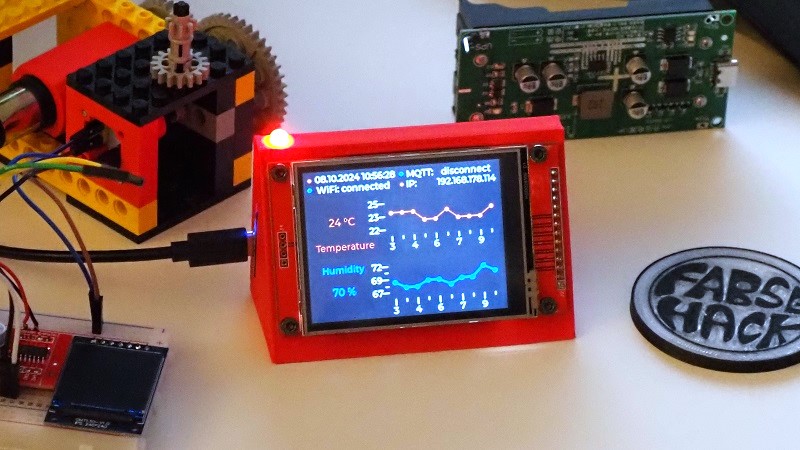temp_humidity_micropython_lvgl
Posted by fabse on 27 October 2024 in Projects
Temperature and Humidity with MicroPython and LVGL
so here is the link to the github repo
Content:
- Temperature and Humidity with MicroPython and LVGL
- Hardware
- Project Description
Hardware
- ILI9341 Display
- Lolin ESP32-S2 Mini
- DHT11 Sensor
- Neopixel LED (P9823)
You can click on the image to visit the GitHub repository:

Project Description
In this project, I'll explain how I built a temperature and humidity display using MicroPython and LVGL.
-
Building the Firmware:
I checked out lvgl-micropython from lvgl-micropython and built the binary file for the ESP32-S2 Mini with the ILI9341 display. I'm not sharing the exact make command because the code is still under development and there are ongoing changes. -
Wiring the ESP32-S2 Mini to the ILI9341 and DHT11:
Proper connections were made between the ESP32-S2 Mini and the ILI9341 display, as well as the DHT11 sensor. You can refer to themain.pyfor the pin definitions. -
Using Squareline Studio:
I downloaded Squareline Studio. Although it's not recommended by the lvgl_micropython developers due to compatibility issues with the generated code, I used it and customized the code to fit the lvgl_micropython bindings from kdschlosser. -
Additional Features:
- German Time: The
German_timeclass handles synchronization with an NTP server, including summer and winter time adjustments, though I'm not yet 100% satisfied with the solution. - MQTT: The project includes MQTT functionality. If you use Home Assistant, you can send the temperature and humidity measurements via MQTT to your MySQL database.
- WiFi Connection: The code attempts to connect to your defined SSID and password. If unsuccessful, it opens an access point.
- Error Exceptions: I've implemented "try/except" blocks in several places to handle errors, timeouts, or OS errors, and log error messages in the MicroPython REPL.
- Automatic Y-Axis Range Adjustments: The Y-axis range in both diagrams adjusts automatically.
- Automatic X-Axis Range: The X-axis range in both diagrams updates automatically (one step per hour).